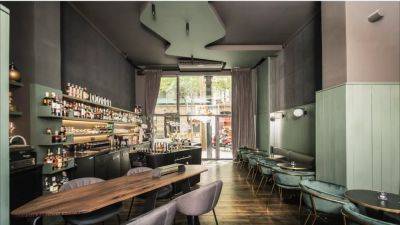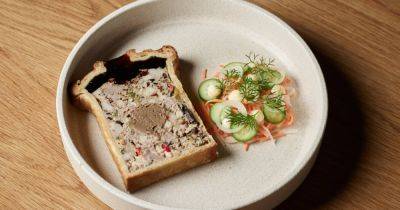Wrapped around Port Phillip Bay, the seahorse-shaped Melbourne is the gateway to the Great Ocean Road. The state capital of Victoria, Australia, Melbourne has also earned itself a reputation for being the coffee powerhouse of the South Hemisphere while streets overflow with galleries, landmark buildings, and green oases. Come rain or shine, there’s always something to do in Melbourne. Whether you’re bookending a road trip or looking to hole up in the city, these are the best hotels in Melbourne, Australia, for luxury and location.
Travel in city Melbourne, Australia

How to Burst Out of Travel’s Luxury Cocoon
Nearly five billion people are expected to fly in 2024, according to the International Air Transport Association, a number that would surpass all previous records. And while first-class travel can provide a refuge from those crowds, it also can interfere with the unexpected encounters that can make travel so rewarding.

Time Out Ranks The World’s 30 Coolest Streets (5 U.S. Cities Made The List)
Every year, Time Out ranks the best cities in the world. For 2024, it’s ranking the world’s 30 coolest streets—and five U.S. cities made the cut. But these are not expected spots (sorry, Fifth Avenue). Instead these are places with true character and charm, where you can eat, drink, dance, shop and stroll.

Traveler Learns Hard Way to Use Full Name When Booking a Cruise
Is it Joe, or is it Joseph? Is it Rich, or is it Richard? Is it Kate, or is it Katherine?

Travels With PBS This Winter
PBS has long been home to the best armchair travel series on television. If you’re looking for a quick escape or some inspiration on where to go in 2024, you’d be wise to watch a new episode or two from these four acclaimed travel series.

The Best Places to Go in Australia, New Zealand & the South Pacific in 2024
This is part of our global guide to the Best Places to Go in 2024—find more travel inspiration here.

Where and How Indians are Traveling During the Festive Season
While metropolises like New Delhi and Mumbai continue to be on the travel list, leisure destinations like Udaipur, Puri, Goa, Jaipur and Munnar are some of the top searched domestic destinations during the festive season (between November 10-14), according to Booking.com.

The World’s 50 Best Bars 2023 Have Just Been Announced
The World's 50 Best Bars have just been announced—and you can consider this your official bucket list of exceptional drinking dens around the world.

I've gotten seriously ill during my trips to more than 80 countries. Here's what I do now to protect myself from getting sick on vacation.
This as-told-to essay is based on a conversation with Lauren Juliff, a 35-year-old who's traveled to over 80 countries. The following has been edited for length and clarity.

Luxurious Takes on Pâté en Croûte
Pâté en croûte, the centuries-old French dish composed of meat terrine baked in savory pastry, was first developed out of economy as a way to preserve and use up bits of offal. But today, with skilled kitchen staffs in short supply, the labor-intensive delicacy — which requires multiple days of confiting, jellying, laminating and simmering — feels like a luxury item. “I like the technical aspect of it,” says the chef Nicolas Delaroque, 42, who serves a classic rabbit-and-tarragon version modernized with a little less fat and a bit more spice at his restaurant, Maison Nico, in San Francisco. Markus Glocker, 42, of New York’s Koloman, likewise set out to create a lighter take on the original. “You’re not going to feel like you just ate a stone,” he says of his salmon en croûte, in which slices of tramezzini, a fluffy Italian bread, are wrapped around a rare salmon filet slicked with scallop-and-parsley mousse and topped with gherkins and a beet-infused butter. At Melbourne, Australia’s Aru, the pâté en croûte is reminiscent of a fancy bánh mì. Chả lua, a ground Vietnamese pork loaf, is combined with chicken liver pâté for the filling, and the jelly layer between the meat and the pastry is seasoned with rice vinegar, soy sauce and Maggi, an MSG-spiked seasoning. “It’s quite a humbling experience,” says the charcutier George Jephson, 39, of assembling his iteration, which is stuffed with pork belly, confit pork tongue, crisped chicken skin, pistachios and port jelly, and can be found at his East London wine bar, Cadet, and at nearby restaurants, including Chiltern Firehouse. Still, making use of the whole pig, he says, is worth the effort. “I worked 10 years as a butcher, and we didn’t sell a single piece of pork liver,” he says. “Now I sell 60 kilos a week.” —

A disabled passenger says she had to crawl to her seat after a worker caused her to fall off her wheelchair
A Qantas passenger said she crawled along the aisle to her seat after a staff member caused her to fall from her wheelchair.

A passenger captured an alarming video of a laser aimed at a plane as it flew over Australia
A passenger filmed what appeared to be a green laser pointing directly at an aircraft as it flew over Australia.

Yet another tourist is wading into a European vacation destination controversy, this time saying she is 'dying to go home' from Capri, Italy
In recent months, a number of TikTokers have faced backlash for sharing their thoughts on viral summer hotspots. They often say they want to show the reality behind the aspirational social-media posts, but viewers argue their expectations were uninformed, or that their criticisms are unfounded.

A delayed flight and lost bag almost ruined an airport proposal that took a month to plan
While Yashraj Chhabra was waiting on one knee, ring in hand, at the Auckland airport, his soon-to-be fiancée, Riiya Shukla, was stressing about her lost luggage.

A hot air balloon made an emergency landing on a highway in Vermont after it stalled in flight
A hot air balloon made an emergency landing in the middle of the Interstate 91 highway in Vermont on Wednesday, the Boston Globe reported.

The 10 Most Livable Cities in the World for 2017
Ever dreamed of packing up everything and moving to another country? Here are the most livable cities in the world, according to a study by The Economist.

The World’s 10 Best Cities to Live in, Ranked
Looking for the best cities to live in or retire abroad? The world’s most livable city is once again Vienna, Austria, according to The Economist’s Intelligence Unit’s annual Most Livable Cities ranking.

Ten hilarious travel mishaps
All experienced travellers know there’s little you can do but sit back and relax when your best-laid plans go awry. Whether you’re travelling by plane, train or automobile, sometimes things just don’t go your way. Inspired by TFL’s bungle here in London in January, here are ten amusing travel mishaps that entertained the world:
Popular Locations
Have great time reading City Melbourne, Australia Ideas, Tips & Guides and scrolling City Melbourne, Australia stuff to learn new day by day. Follow daily updates of our gardening & homemade hacks and have fun realizing them. You will never regret entering this site maxtravelz.com once, because here you will find a lot of useful City Melbourne, Australia information, different hacks for life, popular gardening tips and even more. You won’t get bored here! Stay tuned following daily updates and learning something new for you!
